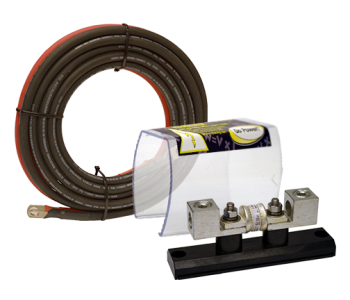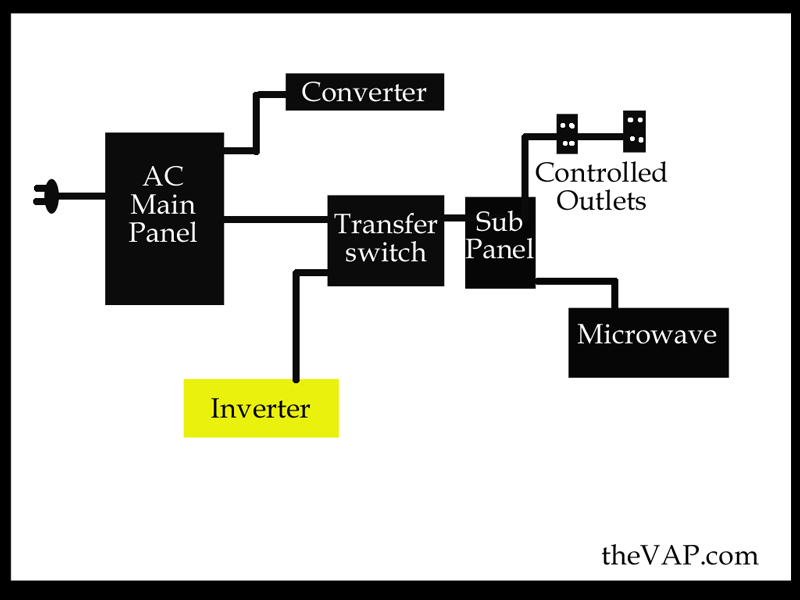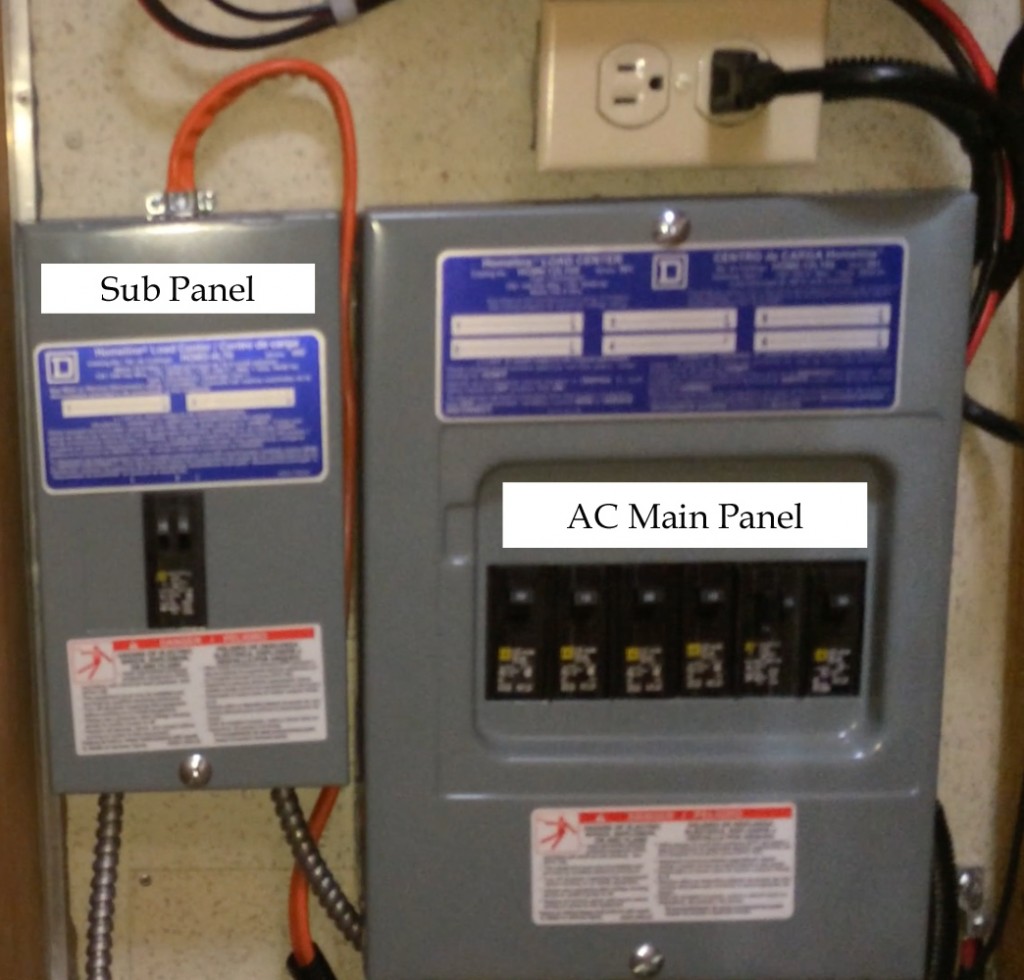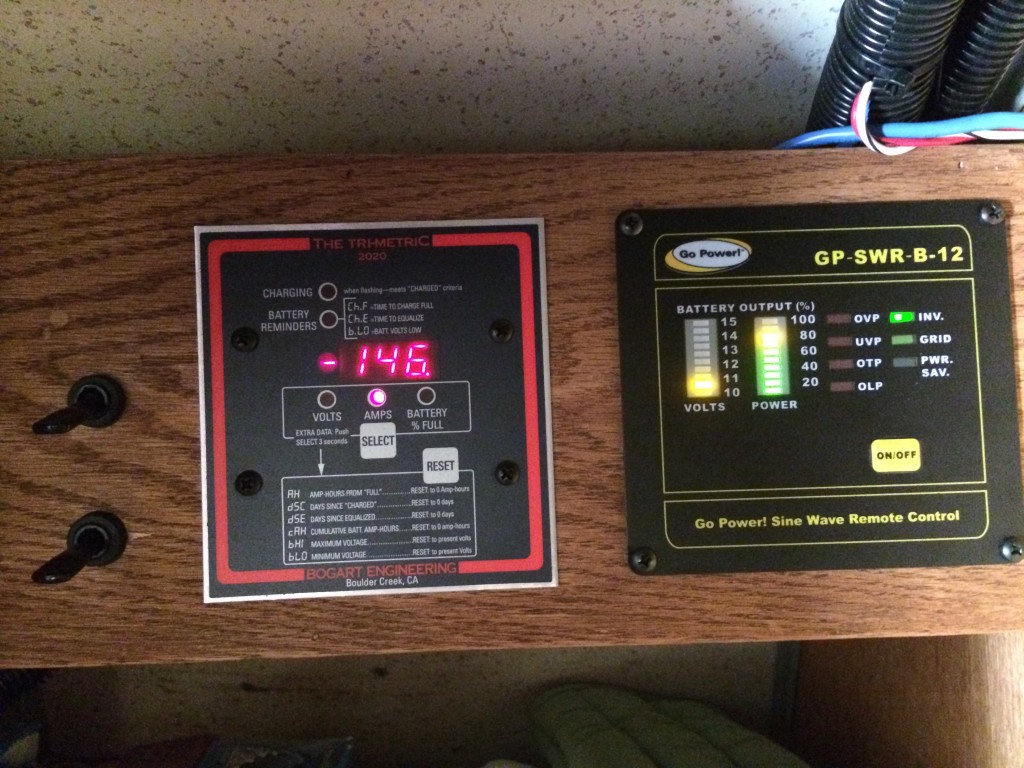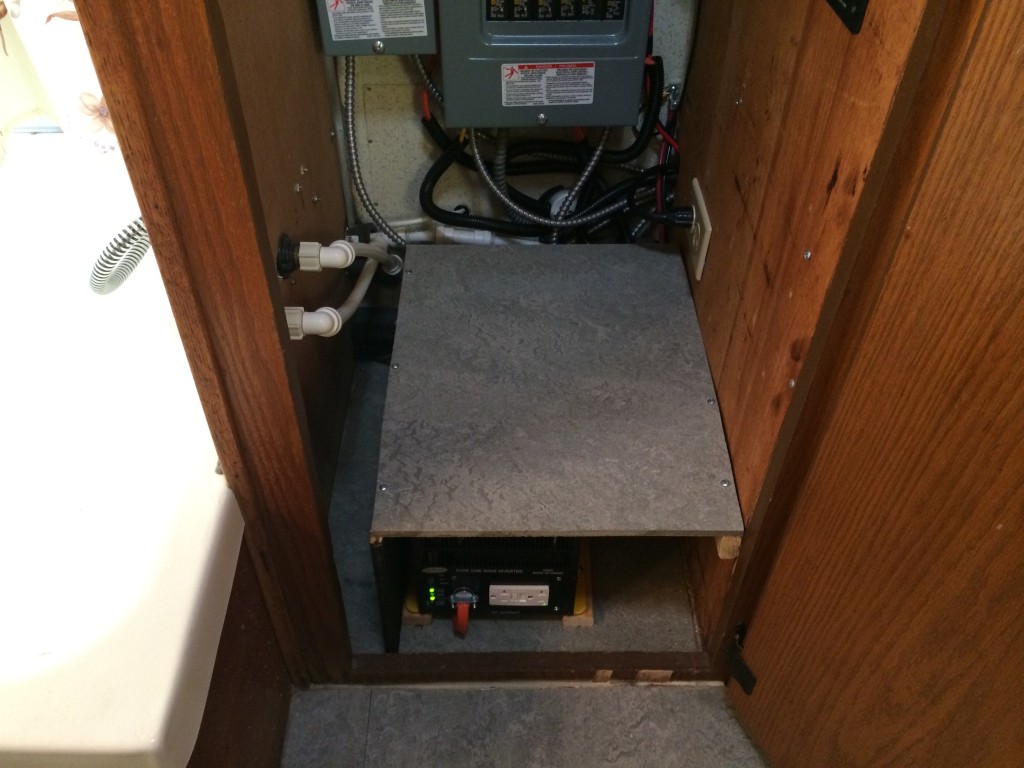Caution: Electricity can be dangerous, consult a professional.
In the first installment we talked about why I chose to go with a pure sine inverter. In part two we talked about why I chose the GP-SW2000-12 Inverter from GoPower.
Now were are going to talk about the actual installation. Big inverters require big amounts of power! I have two 100aH AGM Lifeline batteries giving me a total of 200aH of capacity. I’d say thats an absolute minimum for this size inverter. I’d really like to have 400ah of battery. This just means I have to use my inverter for shorter amounts of time. Of course the solar installation really helps out. When wiring multiple batteries together, be sure and use a wire rating as big or bigger than what’s required for your inverter.
GoPower makes inverter installation kits that supply the right size wire and fuse for the inverter you selected. You do not have to use their kit, but you should use the size of wire and fuse they recommend. I also suggest using a high-quality multi-strand wire that is flexible. Like a marine type cable, sometimes referred to as welding cable. These have many fine strands that make the wire bend easily. When you are trying to fit the inverter into a small space, you’ll be glad you have flexible wire! This is exactly what comes in the GoPower! installation kit.
On my installation, I decided to pick two circuits to power when the inverter is on. Personally I don’t think it’s a good idea to run the whole trailer’s power off an inverter that isn’t capable of running everything. If you have an air conditioner, you’re already out. Add an electric heating element on your water heater, and you just doubled down. You’d also have remember to unplug your converter because you don’t want to generate power from the battery/inverter combination to try and charge the battery. That’s just a loosing combination. I know it’s a lot easier to just plug the trailer cord and and “manage” the devices, but I don’t like it. I know that sometimes dealers even install them this way. Just say “No”!
So the best way to do this is with a transfer switch. Now we start talking about the need for an electrician. You have to dabble in your breaker boxes and get things configured properly the first time. No room for learning here. Sorry!
Just so you know what to talk to your electrician about, I’ve made a little diagram of a transfer switch installed in the trailer electrical system.
In a normal connection to shore power, the energy flows from the AC Main Panel through the Transfer Switch to the Controlled Outlets via the Sub Panel. These outlets can be anything your inverter can handle, like my microwave and TV’s.
When the inverter is on, the Transfer Switch is engaged, and physically moves the wires off of the AC Main Panel, and to the Inverter. Now the inverter is supplying power to the Controlled Outlets and Microwave.
Notice the Converter is only connected to the AC Main Panel, along with other high power devices not shown, like the air conditioner, water heater, etc… This way, the inverter cannot supply power to those appliances.
Now you have an idea of what I did, lets have a closer look.
Below is the installed inverter next to the transfer switch.
Here is the AC Main Panel and Sub Panel. The reason for the sub panel was to be able to have independent circuit breakers for the microwave and outlets with my TVs.
The installation was a success in that I’m able to run my microwave from the inverter. Without sun present, the inverter draws 146 amps from the batteries to run the microwave. When there is full sun, my solar panels deliver 20 amps, and batteries make up the difference at around 120-130 amps. When the microwave is finished, the solar continues to dump 20 amps back into my batteries to fill them back up. Sweet solar!
Here is the tri-metric showing the 146 amp draw (without sun), and the GP-SWR-B Remote Monitor running at 80%.
I completed the installation by adding a small shelf over the inverter. There is plenty of room around it for ventilation, and it will keep us from stacking items directly on the inverter.
Here is a video walk through of my GoPower! GP-SW2000-12 Inverter installation.
That about covers it. I’d like to thank GoPower for their assistance in this project as well as the solar project.
Here are links to some helpful items.
Amazon link for the GP-SW2000-12 Inverter
Amazon link for the GP-SWR-B Remote
Amazon link for the Go Power! GP-DC-KIT4 DC Installation Kit
Amazon link for the Go Power! GP-TS 30 Amp Prewired Transfer Switch for Quick Connect

